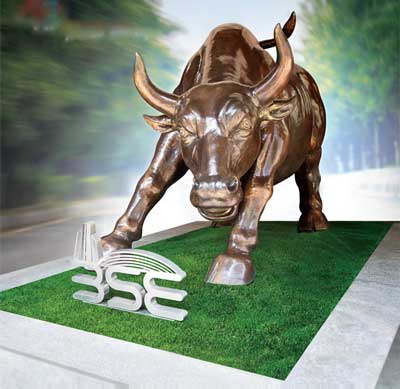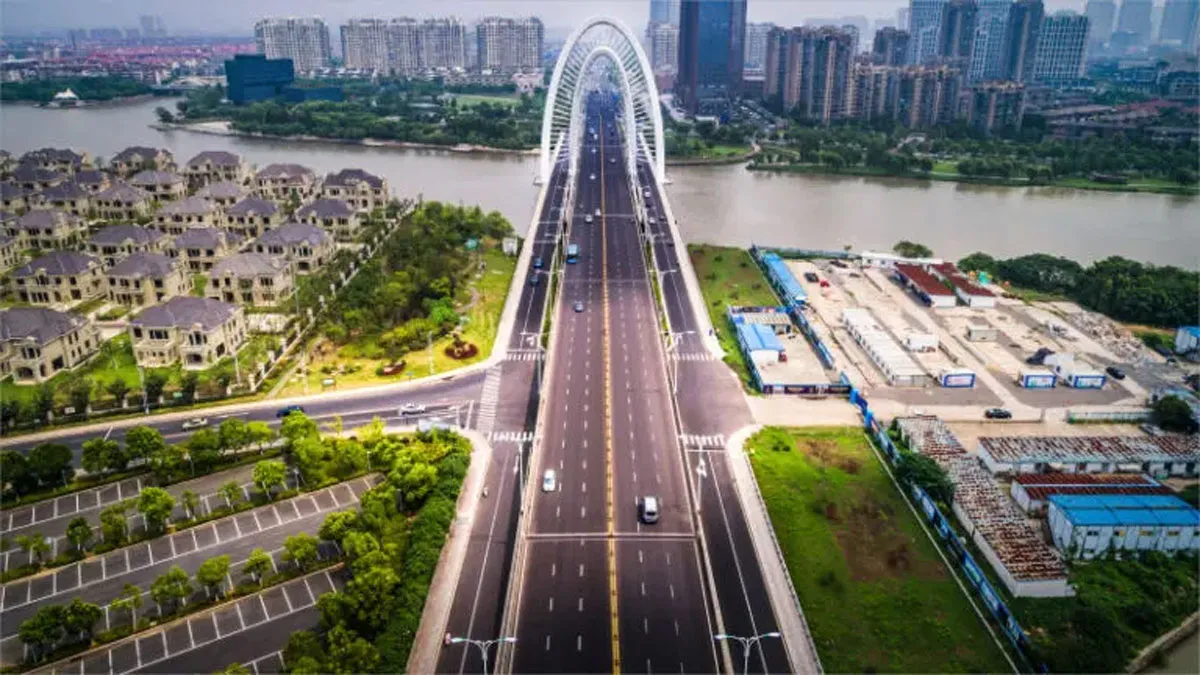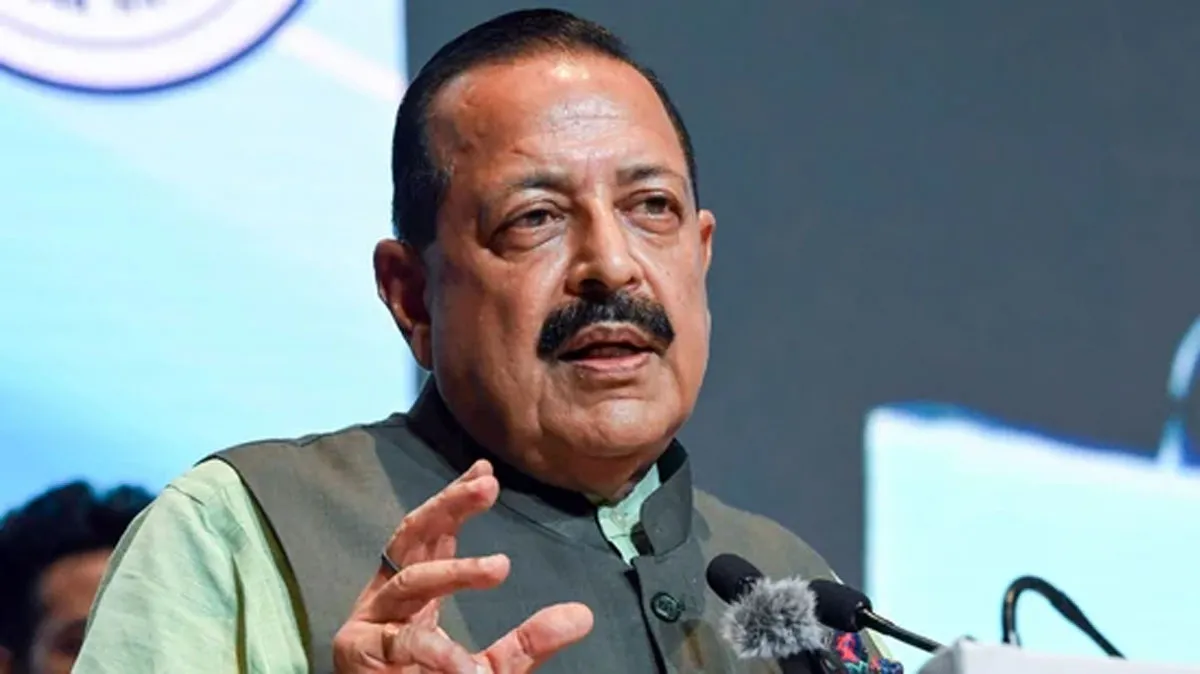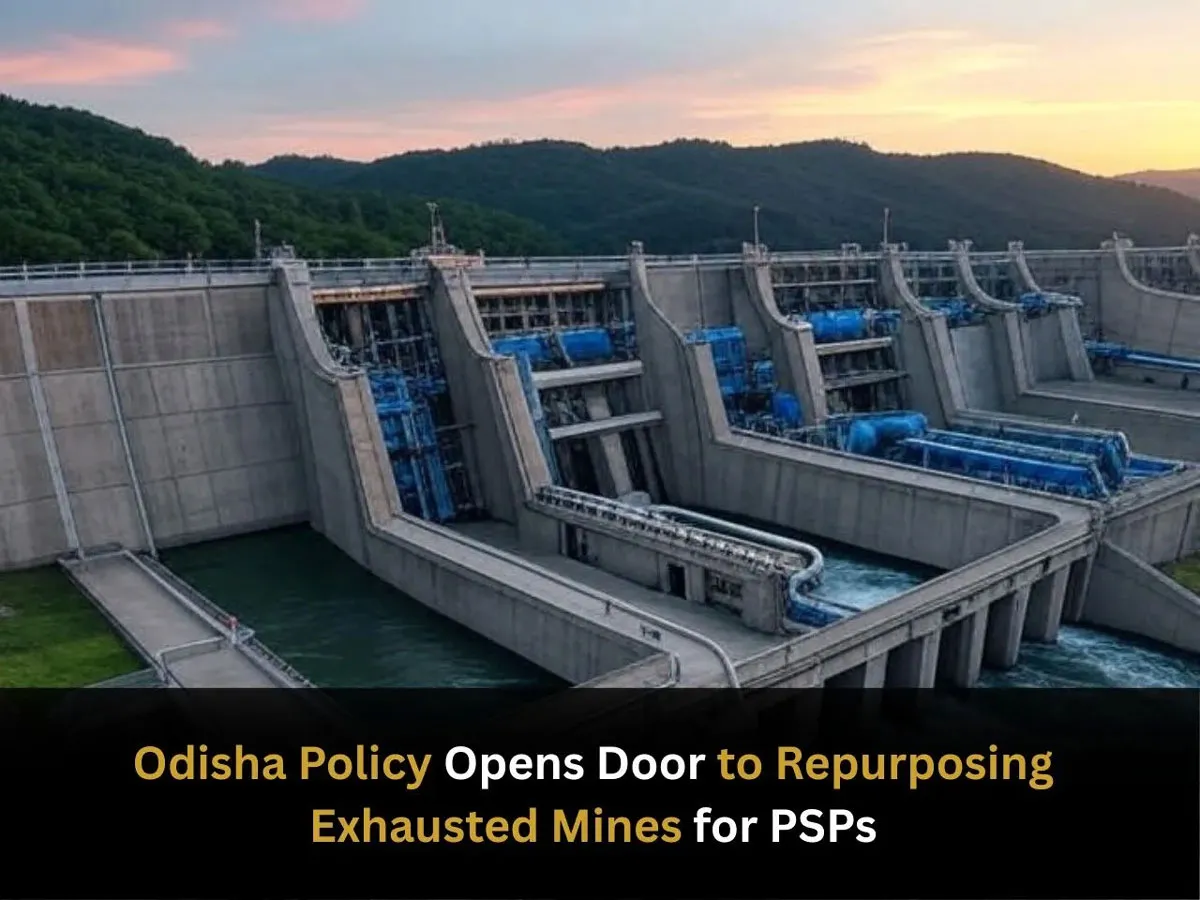The history of construction in India can be well traced if read with the historical swings in the fortunes of the bellwether Larsen & Toubro (L&T) stock.
Here’s what it would take to reach a $5 trillion economy, explains
PRATAP PADODE, Editor-in-Chief, CW.
Until the 1960s, domestic requirement of construction equipment (CE) was entirely met by imports. However, in 1964, domestic production of CE began with the establishment of Bharat Earth Movers (BEML), a public-sector unit of the Ministry of Defence, at Kolar
in Southern India to manufacture dozers, dumpers, graders, scrapers, and more, for defence requirements under licence from LeTorneau Westinghouse, USA, and Komatsu, Japan. The Earthmoving Equipment Division of Hindustan Motors (the manufacturer of the Ambassador car) was established in 1969 at Tiruvallur, near Chennai, with technical collaboration from Terex, UK, for manufacture of wheel loaders,
dozers and dumpers; and in 1984 collaboration with Caterpillar. This factory was taken over by Caterpillar in 2000 for its Indian operations.
In 1974, under license from Poclain, France, L&T started manufacturing hydraulic excavators. Later, Telcon (now known as Tata Hitachi) and Escorts JCB commenced manufacture of hydraulic excavators (under license from Hitachi, Japan) and backhoe loaders. JCB had entered India in 1979 with Escorts with a 40:60 ratio. By 1990, JCB increased its stake by 20 per cent. Finally in 2003, taken over by
JC Bamford Excavators, UK, Escorts JCB became JCB India.
The year 1990-91 was an eventful and defining one. India’s economic crisis had reached a point of no return. First, the State Bank of India sold 20 tonne of gold in May 1991 to the Union Bank of Switzerland (UBS) to raise around $200 million. Then in July 1991, the Reserve Bank of India (RBI) pledged 46.91 tonne of gold with the Bank of England and the Bank of Japan to raise $400 million. The Government also got emergency loans from the International Monetary Fund (IMF) in two tranches totalling around $2 billion earlier
in the year. This was the last time India had to raise such a loan from the IMF. The gates to the Indian economy flew open and the shackles broke down. The era of License Raj was over and free enterprise was given a shot in the arm.
L&T notched up sales of
Rs.1,387 crore in financial year 1990-91 and net profits of Rs.91.34 crore – the company was touted even then as one of the best run in the country and among the likes of blue-chip firms such as the then Tata-owned and operated Associated Cement Companies (ACC). Within this turnover (which incidentally would have fallen among our ‘small category’ classification), cement comprised approximately Rs.300 crore with a 2.2 million tonne (mt) capacity. L&T’s earthmoving machinery division was a major industry player and the company supplied nuclear plant equipment to the Government. It also had a core business, that of manufacturing chemical plant machinery. Reliance Industries (RIL) launched a takeover bid on L&T in those days and the speculation was that it was either interested in the chemical plant machinery business or simply leveraging L&T’s balance sheet as RIL along with the merged entity of L&T would become a `10,000 crore group.
The Diwali festival began the year Samvat 2048 with fireworks that boosted the stock market index to 853.7 (currently ruling between 58,000 and 60,000).
In the 1990s, India saw a focus on strengthening its road network.
And since 1995, the National Highways Authority of India (NHAI) began to privatise road network development. Capital expenditure by NHAI rose rapidly to $175 million in 1999-2000. The real fillip came in 1998, when the National Highways Development Project (NHDP) was launched with the flagship project of the Golden Quadrilateral (GQ), a total of 5,846 km of four-to-six-lane highways connecting Delhi, Mumbai, Chennai and Kolkata. The GQ project was intended to establish faster transport networks between major cities and ports, provide smaller towns better access to markets, reduce agricultural spoilage in transport, drive economic growth and promote truck transport.
Between 1996 and 1999, the construction of the Mumbai-Pune Expressway, which had been languishing, was fast-tracked. During this time, 55 flyovers were built in Mumbai alone and Maharashtra’s rural road connectivity increased to 98 per cent. The concept of public-private partnership (PPP) in development was also pioneered at the time. Notably, the consumption of cement, which is one of the largest inputs into the construction industry, increased to nearly 83 mt by 1997-98. (It doubled to 172 mt per annum (mtpa) by 2007, i.e. in the next
10 years. Currently, the installed capacity of cement in India is
545 mtpa.)
By the year 2000, India had a population of 1 billion. Construction, which was recognised as ‘industry’, served projects worth Rs.240,000 crore and employed over 35 million people. JCB had a turnover of Rs.450 crore. L&T, meanwhile, reported a net operating revenue of Rs.7,390 crore nearly four times over 10 years.
India’s economy soared
10.4 per cent in the final quarter of 2003, making it one of the fastest growing in the world, even ahead of China. The last quarter’s rise, up from an 8.4 per cent pace in the previous quarter, was driven mainly by an expansion of nearly 17 per cent in farm output. On April 30 2003, the market capitalisation of L&T was $1.09 billion. The CE market was around 7,000 units or Rs.4500 crore. JCB had a turnover of Rs.550 crore. India’s dream run in the economy lasted for five years, with close to
9 per cent average annual growth rate between 2003-04 and 2007-08 – one of the world’s highest in this period, close behind China’s. Aided by a favourable global business environment, outsourcing from the US created demand for IT and ITES; merchandise exports grew at
25 per cent annually; and domestic output, as per official statistics, went up from 19.4 per cent in 2003-04 to 25 per cent in 2007-08. The growth in the IT sector helped build demand around infrastructure.
In 2007, the size of the India CE market was about $2.4 billion and grew by 30 per cent. From financial year 2010, the sales of CE with 50,000 units had grown seven times in four years! The following year, growth was 30 per cent and
another 15 per cent in the following year as the number of units sold touched 73,000.
So, while the Lehman Brothers crisis in the US caused worldwide financial turmoil, India remained decoupled from the global markets until the lag effect began kicking in along with policy paralysis in bureaucracy and the Central Government. Only 575 km of the expected 5,500 km of road projects were awarded. Seventy-five per cent of the orders by the NHAI were build-operate-transfer (BOT) projects. This ultimately led to the collapse of several construction companies that bid aggressively to show large order books in the quest to raise capital in the financial markets. Road contractors suffered on the back of stringent conditions by banks, execution issues led by land acquisition and environment clearance delays.
Coming back to our analogy of mapping the growth of the construction industry with the growth of L&T, the operating revenue of L&T rose from Rs.52,196 crore in FY 2012-13 to Rs.1,01,000 crore, or doubled, by 2021-22. That said, the company struggled for growth during 2013-14 and 2014-15 as it could barely raise its revenue to Rs.57,558 crore in
two years, i.e. a 10 per cent in topline growth over two years. Growth in 2015-16 was at 10 per cent but again the following years dragged to 5 per cent and yo-yoed back to 10 per cent. The year 2019-20 could report no growth though COVID struck only at the fag end of the year. The real jump in growth has been during 2021-22 with 16 per cent. As on March 31, 2022, the order book, which was at Rs.357,595 crore, is large, growing and diversified.
The infrastructure segment has a
73 per cent share of the consolidated order book. The Middle East region constitutes 76 per cent of the international order book of
Rs.95,227 crore. The order book of Rs.2,62,000-odd crore emanates from Indian opportunities.
National Infrastructure Pipeline
To achieve the GDP of $5 trillion by 2024-25, India needs to spend about $1.4 trillion over these years on infrastructure. During the fiscals 2008-17, India invested about
$1.1 trillion on infrastructure.
However, the challenge is to step up infrastructure investment substantially. Keeping this objective in view, the National Infrastructure Pipeline (NIP) was launched with projected infrastructure investment of around Rs.111 lakh crore ($1.5 trillion) during FY 2020-2025 to provide world-class infrastructure across the country and improve the quality of life for all citizens. It also envisages to improve project preparation and attract investment, both domestic and foreign, in infrastructure. NIP was launched with 6,835 projects, which has expanded to over 9,000 projects covering 34 infrastructure subsectors. During the fiscals 2020 to 2025, sectors such as energy (24 per cent), roads (19 per cent), urban (16 per cent), and railways (13 per cent) amount to around 70 per cent of the projected capital expenditure in infrastructure in India. A sector-wise breakup of the pipeline for the period 2019-20 to 2024-25 is given below.
National Monetisation Pipeline
NITI Aayog has developed the National Monetisation Pipeline (NMP Volumes 1 and 2) in consultation with infrastructure line ministries.
Asset monetisation entails a limited period license/lease of an asset, owned by the Government or a public authority, to a private-sector entity for upfront or periodic consideration. The private-sector entity is expected to operate and maintain the asset based on the terms of the contract or concession, generating returns through higher operating efficiencies and enhanced user experience.
Funds so received by the public authority are reinvested in new infrastructure or deployed for other public purposes. Such contracts include provision for transfer of the asset back to the authority at the end of the period. Total indicative value of NMP for core assets of the Central Government has been estimated at Rs.6 lakh crore over a four-year period (5.4 per cent of total infrastructure investment envisaged under NIP). Transactions worth an estimated Rs.96,000 crore were concluded in 2021-22 under the National Monetisation Pipeline (NMP), surpassing the target of Rs.88,000 crore, according to a government official statements. The coal and mining sectors, roads and power assets were key to the monetisation target being surpassed last fiscal.
Road construction
There has been a consistent increase in the construction of National Highways and roads since 2013-14 with 13,327 km of roads constructed in 2020-21 compared to 10,237 km in 2019-20, indicating an increase of 30.2 per cent over the previous year. In 2021-22 (till September), 3,824 km of road network was constructed. The extent of road construction per day increased substantially in 2020-21 to 36.5 km per day from 28 km per day in 2019-20, a rise of 30.4 per cent compared to the previous year. The significant upturn in road construction in 2020-21 is owing to the increase in public expenditure by 29.5 per cent compared to the previous year – a reflection of the Government’s impetus to a critical sector that generates employment and supports infrastructure during a pandemic year.
In addition to action taken to increase the network of National Highways, the Government has taken measures to address the village-level road network through the Gram Sadak Yojana.
The ministry had constructed 10,237 km in 2019-20, 13,327 km in 2020-21 and 10,457 km in 2021-22. The current target of 50 km per day requires an increase of over 64 per cent above the construction pace during 2020-21. Between September 2022 and March 2023, the Ministry needs to construct 18,988 km, which means a pace of over 90 km per day!
Railways construction
Being the third largest network in the world under single management and with over 68,102 route km, Indian Railways (IR) strives to provide a safe, efficient, competitive and world-class transport system. An average of
1835 track km per year of new
track length has been added through new line and multitracking projects during 2014-2021 compared to the average of 720 track km per day during 2009-14. IR is also adopting indigenous new technology
such as KAVACH, Vande Bharat trains and redevelopment of stations to provide a safe journey and better travel experience.
The next 10 years will see a very high level of capital expenditure (capex) in the railway sector as capacity growth is to be accelerated such that by 2030 it is ahead of demand. Up to 2014, capex on railways was barely Rs.45,980 crore per annum and consequently the railways was characterised by high levels of inefficiency and highly congested routes unable to meet
the growing demand. After 2014,
a conscious effort was made to improve the railway sector by substantially increasing the capex.
The capex outlay for 2021-22 was Rs.2,15,000 crore, which was more than five times the 2014 level.
For financial year 2022-23 a capital expenditure push of Rs.2.45 lakh crore which is 14 per cent higher than budgeted in the previous year is envisaged. A revenue target of Rs.2.39 lakh crore has been fixed for fiscal 2023, 18 per cent higher from 2021-22. As more projects are taken on hand and several sources of capital funding are developed, the capex will increase further in coming years and the railway system will actually emerge as an engine of national growth.
Civil aviation
To improve efficiency, performance and service quality, encourage greater investment and reduce government influence, the Airports Authority of India (AAI) has awarded six airports – Ahmedabad, Jaipur, Lucknow, Guwahati, Thiruvananthapuram and Mangaluru – for operations, management and development to the highest bidder, Adani Enterprises Ltd (AEL), under PPP mode for a lease period of
50 years. Besides, AAI had leased out Delhi and Mumbai Airports in 2006 to Delhi International Airport and Mumbai International Airport respectively for operations, management and development under PPP mode for a period of
30 years. As per the NMP, 25 AAI airports have been earmarked for asset monetisation over the years 2022 to 2025: Bhubaneshwar, Varanasi, Amritsar, Trichy, Indore, Raipur, Calicut, Coimbatore, Nagpur, Patna, Madurai, Surat, Ranchi, Jodhpur, Chennai, Vijayawada, Vadodara, Bhopal, Tirupati, Hubli, Imphal, Agartala, Udaipur, Dehradun and Rajahmundry.
UDAN is a regional airport development programme of the Government of India and part of the Regional Connectivity Scheme (RCS) of upgrading underserviced air routes. Till the launch of UDAN in 2016, India had 74 airports with scheduled operations. But within four years of its launch, four rounds of bidding under RCS-UDAN have
taken place and 153 RCS airports, including 12 water aerodromes and 36 helipads, have been identified for operation of RCS flights.
In the last four years after commencement of the scheme,
948 valid awarded routes have been allotted to various airlines. Of these, 389 RCS routes connecting
62 unserved and underserved airports (including six heliports and two water aerodromes) have been operationalised so far.
As per the revised estimates of 2021-22, Rs.62,057 crore will be spent on repaying the debts of Air India through equity infusion. While the overall allocation to the Ministry has reduced, the revenue expenditure budgeted for 2022-23 is 76 per cent higher than the revised estimates of 2021-22. Of this, Rs.9,260 crore will be allocated towards Air India Asset Holding (AIAHL).
Port construction
Sagarmala is a national programme aimed at accelerating economic development by harnessing the potential of India’s 7,500-km-long coastline and 14,500 km of potentially navigable waterways.
The Sagarmala projects include port modernisation and new port development, connectivity enhancement, port-led industrialisation, coastal community development, coastal shipping
and inland water transport.
Currently, there are 802 projects worth investment of Rs.5.54 lakh crore for implementation under Sagarmala by 2035. Of this, 181 projects worth Rs.94,712 crore have been completed and 223 projects worth Rs.2.11 lakh crore are under implementation. Further, 398 projects worth Rs.2.48 lakh crore are under various stages of development.
The Maritime India Vision 2030 (MIV 2030), a blueprint to ensure coordinated and accelerated
growth of India’s maritime sector in the next decade, was released on March 2021. The objective is to develop world-class mega ports and transhipment hubs and ensure infrastructure modernisation.
MIV 2030 estimates that the development of Indian ports will
drive cost savings of Rs.6,000-7,000 crore per annum for export-import (EXIM) clients. Further, the augmented operations are
estimated to create an additional ~700,000-1,000,000 jobs in the sector. MIV 2030 estimates the investment requirement for capacity augmentation and development of world-class infrastructure at
Indian ports to be to the tune of Rs.100,000 to 1,25,000 crore.
In the Union Budget 2022-23,
the Ministry of Ports, Shipping and Waterways has received an
allocation of Rs.1709 crores of
which Rs.412 crores has been allocated for Sagarmala, Rs.96 crores for inland water transport.
Real estate and housing
Rising capital expenditure by the Government on infrastructure and an uptick in the housing cycle have been responsible for reviving the construction sector. This has allowed the consumption and production of steel and cement to revert to
pre-COVID levels. Statistics provided by RBI and leading real-estate companies show significant revival in the Indian residential real-estate market in 2021 in terms of growth in sales, prices and new launches.
Investment
India is in a capex upcycle trend. The quick revival from the COVID-led slump has been backed by public investment, which has resulted in a rebound in gross fixed capital formation (GFCF) in FY22. The ratio of GFCF to GDP (constant prices) rose to 32.5 per cent in FY22. For FY23, the Government has budgeted for a strong capex growth of 25 per cent to Rs.7.5 lakh crore and has already achieved 27.8 per cent (`2.1 lakh crore) of the capital expenditure target in the first four months of the current fiscal.
Overall, the Centre’s capex rose by 62.5 per cent year on year in the April-July period of the ongoing fiscal year, with roads and highways, railways and defence being the top three investment areas. However, the share of defence in total spending has come down over the years while that of roads and railways has increased. As far as the private sector is concerned, there has been deleveraging in the past few years. Now with capacity utilisation levels improving to 75 per cent, the ground is set for a pickup in the investment cycle. While the recent fall in global commodity prices and consequent easing of input prices are supportive of investment uptick, the volatility in commodity prices remains a challenge. While interest cost is rising for corporates, that is unlikely to be a big deterrent for the pickup in capex.
In 2021-22, the manufacturing sector is expected to grow by
12.5 per cent, mining and quarrying by 14.3 per cent, construction by
10.7 per cent and electricity, gas and water supply by 8.5 per cent.
This improvement is on the back of industrial contraction in the corresponding period of the last financial year.
FDI inflows
In 2021-22, India received its ‘highest ever’ foreign inflows of
$83.6 billion. It is on track to attract
$100 billion of foreign direct investment (FDI) in the current fiscal on account of economic reforms and ease of doing business as per expectations. Commenting on the performance of 2021-22, the commerce and industry ministry stated, “This FDI has come from 101 countries and been invested across 31 union territories and states and 57 sectors in the country. On the back of economic reforms and the ease of doing business in recent years, India is on track to attract $100 billion FDI in the current financial year.”
Analysis
Our study shows that the construction companies gathered in the table here total an operating revenue of Rs.2,92,395 crore with a profit of Rs.12,838 crore, equalling to a margin of just 4.4 per cent. Of this,
35 per cent is contributed by
one giant, L&T. The balance Rs.1,91,395 crore is contributed by
54 other companies. Another way to explain how this industry is being held together by a few powerhouses is that the top 15 companies constitute Rs.2,37,605 crore out of the total revenue of Rs.2,92,395 crore,
which is 81 per cent of the total.
The balance Rs.54,790 crore is being chased by 40 companies. The top 20 companies constitute Rs.2,58,422 crore, which is 88 per cent of the
total revenue.
The top 15 companies make Rs.15,153 crore by way of profit and the top 20 companies make Rs.15,415 crore – and L&T contributed over
50 per cent of this pie.
The market capitalisation of the construction companies, not including real-estate companies, is Rs.3,84,409 crore and L&T contributes Rs.2,68,988 crore of this, which is nearly 70 per cent of the total. The valuation of the companies is just 0.6 times the turnover if you exclude L&T. In the case of L&T, it is 2.66 times the operating revenue. Theoretically, with good governance, this industry can increase its market capitalisation by Rs.2,64,579 crore even if we take a modest multiple of twice the revenue.
The year ahead
While all macros were showing signs of a positive revival, the World Bank has tempered its expectation of growth from India to 6.5 per cent by revising its growth forecast for the third time. The headwinds of global disruptions are taking a toll on risk appetite, which had just recently seen an uptick. The forecast is based upon the gloomy scenario prevalent today amid the uncertainties of the Russia-Ukraine war, the Chinese slowdown, inflation worries and so on. The OPEC also has recently cut its production and is likely to set a spike in the prices in the near future. However, most recently, S&P Global Ratings
Chief Economist Paul Gruenwald described India as a “shining star” of the global economy. He said that compared to a slowing global economy, the Indian economy is doing pretty good owing to reforms, the Government’s investment push and a large domestic market.
So, while the Ukraine-Russia conflict, inflation, hike in interest rates, commodity rates and supply chain disruptions are challenges that will continue to drag growth, a good monsoon, pickup in rural demand, FDI, lower oil prices, higher exports and/or lower imports can work in our favour.
The worry, however, in construction, is the slow pace of contract awards that has been dogging the sector. Given that only 2,912 km of roads have been constructed between April and August in 2022, the Ministry needs
to construct 18,988 km between September 2022 and March 2023, or over 90 km per day, as mentioned earlier.
Second, the aggressive bidding for smaller packages is a dangerous scenario. Given that interest rates are soaring and contractors have been just about making a profit after tax of 5 per cent on operating revenue, the rising interest rate trend will only take them to financial stress. We have already seen how the high and mighty crumbled, right from
Punj Lloyd in the North to IVRCL in the South or Lanco Infra, Essel Infraprojects, Jaiprakash Associates, Soma Enterprises, and IL&FS. These companies had experienced and qualified managers, and a rich roster of engineering experience to their credit. However, in most cases, money was not released to these companies as it was stuck in arbitration, and they had bid too aggressively leaving them very little capacity for financial delays.
The scenario has not changed and once again there are companies armed with good balance sheets approaching banks for loans to fund their impressive order books, which have been secured at very low margins. Will they be able to sustain the volatility that is in store?
India needs to provide a level playing field for construction companies to thrive and survive.
With interest rates in double digits and margins in single digits, the road to value destruction is imminent. Based upon experience, balance sheets and quality parameters, some companies need to be provided a threshold margin for timely fulfilment. The Government should relook at its law on land acquisition that has only served political interests and become a safe haven for the cash economy. NHAI needs to get its due as an independent authority and it needs to deliver as per plans laid down from the time the Union Budget is announced. The quality cost-based selection system (QCBS) that was green lit recently is now only being used for consultants and has not found its way to construction contracts. The FIDIC contract has become a watered-down version of the one we began with. Contracting companies are soldiering on building the nation and their ilk need to be protected and groomed for we have mountains to build in infrastructure.
Evidently, it is time to rehaul the entire system once again if we have to reach our goals to becoming a $5 trillion economy in our desired timeline.




















